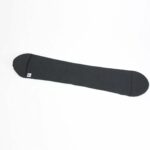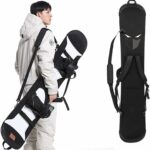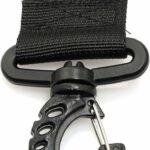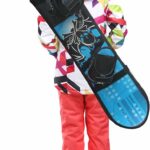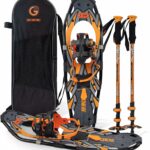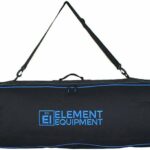Just picture this: it’s a peaceful winter day, snowflakes drifting gently to the ground to add to the sparkling blanket of snow already being kissed by the daylight. You’re yearning for an adventure out in this tranquil scene. But with the snow’s deep cover, you’ll need the right gear to navigate and enjoy your frozen escapade. This is where snowshoes come in handy. What are snowshoes, you might ask? Imagine footwear that not only keeps your feet warm but also feature wide, flat surfaces to distribute your weight evenly over the snow, preventing you from sinking. Let’s strap on a pair and explore more about these fascinating contraptions!
History of Snowshoes
Can you believe how far we’ve come from the days when our ancestors strapped animal bone and hide to their feet, just to prevent sinking into snow? That, dear reader, is the origin stories of what we now know as snowshoes.
Origins of snowshoes
Snowshoes were originally tools of survival for our ancestors, particularly those who lived in areas blanketed by heavy snow for large parts of the year. Think about the indigenous tribes of North America, or the Sami people of Northern Europe. Our ancestors cleverly figured out that increasing the surface area of their feet helped distribute their weight over the snow, preventing them from sinking.
Development over time
Over the centuries, the design of snowshoes evolved from simple bone-and-hide constructs to intricately woven works of art. Ash wood and rawhide lacings were common materials. The designs varied based on different factors such as the type of snow, terrain, and cultural significance.
Cultural significance
Not merely tools for survival, snowshoes soon took on cultural significance too. Tribes began decorating their snowshoes with intricate patterns and designs. They were used in ceremonial dances, rituals, and games. Snowshoe races became popular competitive events and remain so today.
Design and Structure of Snowshoes
Snowshoes have come a long way since their primitive origins. Today’s models are far more lightweight and technically sophisticated.
Material composition
Modern snowshoes are typically made of durable, lightweight materials like aluminum, synthetic fabric, and tough plastic. Some models even incorporate high-tech carbon fiber for superior strength-to-weight ratio.
Common models and patterns
There are three main designs of snowshoes: the oval or teardrop shape, the bear paw shape (circular with no tail), and the beaver tail (elongated with a rounded nose and long tail). Each design has its own benefits, like maneuverability or stability.
Size and shape variations
Snowshoe sizes and shapes are not one-size-fits-all. They vary based on the wearer’s weight, the activity, and the snow conditions. Larger snowshoes are better for deep snow and heavier wearers, while smaller, sleeker models are better for packed snow and lighter wearers.
Types of Snowshoes
Just as there are varied activities one can do in the snow, there are different types of snowshoes to match these activities.
Recreational snowshoes
Recreational snowshoes are great for general use such as for short hikes, and are perfect if you’re just starting out. They are designed for comfort and ease of use on fairly flat and easy trails.
Aerobic/Running snowshoes
These are sleek, lightweight, and smaller in size, specifically designed for speed and agility. If you’re into winter running or fast-paced snow trekking, these are your go-to pair.
Mountaineering snowshoes
Mountaineering snowshoes are the heavyweights of the snowshoe family. These models are designed for serious off-trail trekking and climbing steep, rugged mountain terrains. They come with more aggressive crampons for grip and are built to withstand tough weather conditions.
How to Choose Snowshoes
Choosing the right pair of snowshoes involves thinking about your planned activity, your weight, the terrain you’ll use them on, and the typical snow conditions you’ll encounter.
Based on purpose
Your purpose for snowshoeing dictates your choice. Are you using them for a casual winter walk? Go for recreational. High-energy racing in the snow? Aerobic/running snowshoes. An adventure in the mountains? Mountaineering snowshoes.
Considering the user’s weight
Your weight (including any gear you’ll be carrying) is crucial in the decision. More weight requires larger shoes for better flotation. Most come in various sizes for this purpose alone.
Terrain of use
For flat, easy trails, simple recreational snowshoes work well. For steeper, icier terrains, you’ll need snowshoes with more aggressive crampons for better traction.
Snow conditions expected
In light, powdery snow, larger snowshoes can better keep you afloat. In denser, packed snow smaller ones will do.
Proper Usage of Snowshoes
Walking and running in snowshoes isn’t overly complex, but there are a few good techniques that can make your snowshoeing experience much more enjoyable.
Putting on snowshoes
Most snowshoes strap on to your regular winter boots. Make sure the straps are tight enough to hold but not constrict your feet.
Walking & running in snowshoes
Walking in snowshoes involves wider and slightly exaggerated steps. When running, the technique is similar but you’ll need to lift your knees higher.
Functional tips and tricks
To make the most of your snowshoes, practice how to climb up and descend slopes, traverse a hill, and how to get up when you fall. Trust me, it happens a lot!
Benefits of Using Snowshoes
Apart from making winter walking easier, snowshoeing has some other fantastic hidden benefits you may not have thought about.
Ease of movement in snow
With snowshoes, you can glide across snow-covered landscapes with ease, not worrying about sinking or struggling in deep snow.
Health and fitness benefits
Snowshoeing is a great aerobic exercise. It helps improve your cardiovascular fitness, flexibility, and strength. The best part is that it’s a low-impact exercise, meaning it’s easy on the joints.
Unlocking winter landscapes
Snowshoes open up an entirely new world of winter exploration. Frozen lakes, snow-covered forests, serene mountain landscapes. Relay races or tranquil solitude walks, snow makes it all possible.
Snowshoe Maintenance
Like any equipment, your snowshoes need some TLC so they can serve you well for many years.
Cleaning and storage
After each use, make sure to clean any snow or dirt off your snowshoes. Let them dry completely before storing them in a cool, dry place.
Repairs and lifespan
Regular checks for any wear and tear or damage will ensure you get the most life out of your snowshoes. Manufacturers often offer replacement parts for worn out or damaged components.
Snowshoe Safety
Even with the best gear, you need to put safety first when venturing out into winter landscapes.
Preventing injuries
Warm up and stretch before you head out to prevent strains and falls. Stay hydrated and know your limits.
Appropriate attire
Dress in layers. Waterproof boots, moisture-wicking clothing, a good jacket, gloves, and a beanie are essentials to keep you warm and dry.
Emergency situations
When going for long treks, always share your plans with someone. Carry a first-aid kit, emergency blanket, whistle, and if possible, a personal location beacon.
Ethics of Snowshoeing
With the joy of snowshoeing comes responsibility.
Respect for nature
Leave wildlife undisturbed and follow the “Leave no trace” principles. Stay on marked trails and avoid walking on plant life.
Responsible trail usage
Always yield to other trail users. Respect the trail signs and keep to the right of the trail.
Famous Snowshoe Trails
You’ll find rewarding snowshoeing destinations around the world, and we all have our favourites!
Snowshoeing destinations around the world
In Europe, explore the Alps or Scandinavia. In Asia, places like Mongolia and Japan offer magnificent snowscapes.
Regional favorites in North America
North America has no shortage of snowshoe trails. Try the Rocky Mountain National Park in Colorado, or the Mt. Bachelor trails in Oregon.
Preparing for a snowshoeing adventure
Before you go, check the weather and trail conditions, ensure your equipment is in good shape, pack adequate food and water, and dress for the conditions.
So, ready to step into a pair of snowshoes and start exploring this winter? We promise it’s easier than it looks, and the joy of crunching through pristine winter landscapes is beyond description. Happy snowshoeing!
- What Snowboard Bindings Should I Get? - January 23, 2024
- What Size Screws For Snowboard Bindings? - January 23, 2024
- How To Snowmobile On Water? - January 23, 2024

